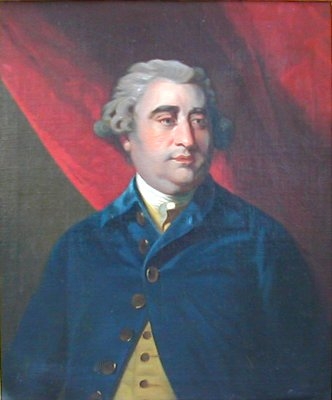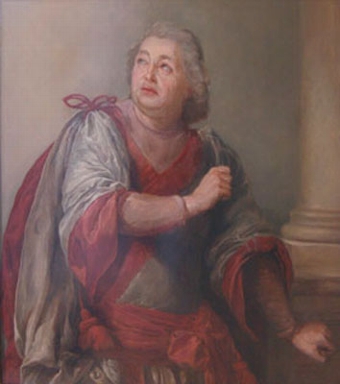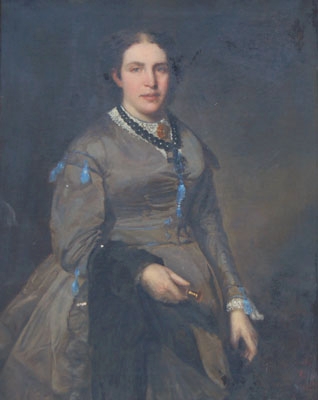featured item

quality pair of antique edwardian postal scales and weights Read more
the old copper mine llandudno, conway wales
- View other items in:
- antiques interior design modern and vintage
- other interior design
artware ltd
Enquire about this antique
Artware Ltd has 565 antiques for sale.
click here to see them all
Llandudno (Welsh pronunciation: is a seaside resort and town in Conwy County Borough, Wales. In the 2001 UK census it had a population of 20,090 including that of Penrhyn Bay and Penrhynside, which are within the Llandudno Community. The town is just off the North Wales Coast railway line which was opened as the Chester and Holyhead Railway in 1848, became part of the London and North Western Railway in 1859, and part of the London, Midland and Scottish Railway in 1923. Llandudno was specifically built as a mid-Victorian era holiday destination and is served by a branch railway line opened in 1858 from Llandudno Junction with stations at Deganwy and Llandudno.
Llandudno, Queen of the Welsh Resorts, a title first implied as early as 1864, is now the largest seaside resort in Wales, and lies on a flat land between the Welsh mainland and the Great Orme peninsula. Llandudno, which lies in Conwy County Borough, was formerly in the district of Aberconwy within Gwynedd, and until 1974 was in Caernarfonshire.
Modern Llandudno takes its name from the ancient parish of Saint Tudno but also encompasses several neighbouring townships and districts including Craig-y-Don, Llanrhos, and Penrhyn Bay. Also nearby is the small town and marina of Deganwy and these last four are in the traditional parish of Llanrhos. The ancient geographical boundaries of the Llandudno area are complex. Although they are on the eastern side of the River Conwy (the natural boundary between north-west and north-east Wales), the ancient parishes of Llandudno, Llanrhos and Llangystennin (which includes Llandudno Junction) were in the medieval commote of Creuddyn in the Kingdom of Gwynedd, and afterwards part of Caernarfonshire. Today, Deganwy and Llandudno Junction are part of the town community of Conwy even though they are across the river from Conwy and linked to Conwy only by a causeway and a bridge. The town of Llandudno developed from stone age, bronze age and Iron Age settlements over many hundreds of years on the slopes of the limestone headland, known to seafarers as the Great Orme and to landsmen as the Creuddyn peninsular. The origins in recorded history are with the Manor of Gogarth conveyed by King Edward I to Annan, Bishop of Bangor in 1284. The manor comprised three townships, Y Gogarth in the south-west, Y Cyngreawdr in the north (with the parish church of St. Tudno) and Yn Wyddfid in the south-east. By 1847 the town had grown to a thousand persons served by the new church of St. George, built in 1840, the great majority of the men working in the copper mines with others employed in fishing and subsistence agriculture.
In 1848, Owen Williams, an architect and surveyor from Liverpool, presented Lord Mostyn with plans to develop the marsh lands behind Llandudno Bay as a holiday resort. These were enthusiastically pursued by Lord Mostyn. The influence of the Mostyn Estate and its agents over the years was to become paramount in the development of Llandudno and especially after the appointment of George Felton as surveyor and architect in 1857. During the years 1857 to 1877 much of central Llandudno was developed under Felton''s supervision. George Felton also undertook architectural design work including the design and execution of Holy Trinity Church in Mostyn Street.
The Rev John Louis Petit (1801?1868), architectural historian and watercolour painter, was born on 31 May 1801 in Ashton under Lyne, Lancashire, the only son of John Hayes Petit (1771?1822), a Church of England clergyman and JP, and his wife, Harriet Astley.
The family was descended from Lewis Petit, also known as Lewis Petit des Etans (1665??1720), a Huguenot refugee and military engineer. Petit''s grandfather was John Lewis Petit (1736?1780), the son of John Petit of Little Aston Hall, Shenstone, Staffordshire. He graduated from Queens'' College, Cambridge (BA 1756, MA 1759, and MD 1766), was elected fellow of the College of Physicians in 1767, was Gulstonian lecturer in 1768, and was censor in that year, 1774, and 1777. From 1770 to 1774 he was physician to St George''s Hospital, then on the death of Dr Anthony Askew in 1774 he was elected physician to St Bartholomew''s Hospital. In November 1769 he married Katherine Laetitia Serces, the daughter of one of the preachers of the French Chapel Royal in London. He died on 27 May 1780 and was buried at St Anne''s, Soho. John Louis Petit was educated at Eton College and contributed to The Etonian, then in its heyday. He was elected to a scholarship at Trinity College, Cambridge, in 1822, and graduated BA in 1823 and MA in 1826. On 17 June 1828 he married Louisa Elizabeth, the daughter of George Reid of Trelawny, Jamaica. He had been ordained deacon in 1824 and priest the year after, but it was not until 1840 that he took up his sole church appointment, as curate of Bradfield in Essex, which he held until 1848. By this time he had written and illustrated several works of architectural history, the main occupation of his career.
Petit had shown a taste for sketching in his early years and he made many hundreds of drawings in pencil and ink. These were often finished in watercolour, though in a limited palette. His favourite subject was old buildings, particularly churches, and he spent much time visiting and sketching them. His drawings were rapidly and adeptly executed on the spot, his style in the tradition of English topographical watercolour painters of the previous generation, such as Samuel Prout (1783?1852). Although his works display an instinct for the picturesque setting and the telling viewpoint, his aim was less to produce finished paintings for their own sake than to record historic buildings and architectural details. Many were reproduced in his profusely illustrated books. He occasionally painted in oils. In almost all of these respects he resembles John Ruskin (1819?1900), whose concern for the conservation of old buildings was Petit''s too. In 1839 Petit made his first extensive tour on the continent, which informed his Remarks on Church Architecture (1841), part travelogue, part discursive survey of architectural styles since the Roman. Subsequent works provide more detailed analyses of individual buildings, including Tewkesbury Abbey, Sherborne Abbey, and Southwell Minster. Petit''s credentials as an antiquary are reflected in his co-founding of the British Archaeological Institute in 1844 and his elections as fellow of the Society of Antiquaries and honorary member of the Institute of British Architects. He lectured to the Oxford society for promoting the study of Gothic architecture, a body which mirrored the Cambridge Camden Society and whose membership similarly took a deep interest in the way churches old and new should be laid out and used. This Oxford connection was fruitful academically for Petit, who was admitted to the university ad eundem in 1850, and personally too, as his sister, Maria, married a classics don, William Jelf (1811?1875), in 1849. Architectural Studies in France, Petit''s principal work, appeared in 1854 (new edition 1890). It is a detailed survey of French Gothic, profusely illustrated by Petit and by his companion on the research tour, Philip Delamotte (1820/21?1889), an artist, engraver, and early exponent of photography. Petit does not seem to have used photography for recording buildings; nevertheless, some of the illustrations were reproduced using a new technique, that of anastatic drawing.
Petit''s books come from a rich period in England for research, publication, and debate on architectural history. His writing style was accessible and the illustrations attractive, but he lacked the intellectual rigour of others in the field, such as his Cambridge contemporaries William Whewell (1794?1866) and Robert Willis (1800?1875). His judgements could be shaky and, with his genteel admiration of almost anything old, he could elicit harsh reviews at a time when attitudes were hardening in favour of particular styles as models for revival. While he had a taste for the Romanesque, for example, just before it became fashionable as a style for new churches in the 1840s, he did not make himself its champion. He was not a polemicist like A. W. N. Pugin or George Gilbert Scott; besides, he had a distaste for debates that smacked of religious controversy. This was the tendency from the 1840s, particularly in the pages of The Ecclesiologist, the organ of the Cambridge Camden Society.
When Petit did turn his attention to contemporary architectural practice, he encountered spirited opposition. In 1841 Scott''s designs for the remodelling of St Mary''s, Stafford, were exhibited. This was a church close to Petit''s heart (his brother-in-law was a benefactor) and he objected in writing to the proposal for the thoroughgoing redesign of the south transept. He could accept Scott''s interventions elsewhere in the building but not so the replacement of Gothic fabric, albeit sixteenth-century. Scott accepted the principle but argued that it could be ignored if the style was ?debased?. Their debate by correspondence was eventually put to a panel of experts from the Cambridge Camden Society and the Oxford society noted above. Scott won and Petit gamely published the papers. As galling was the reception of Petit''s only executed architectural design. His sister and brother-in-law moved to Cae''rdeon, near Barmouth, Merioneth, in 1854. Jelf took exception to the fact that most of the services in the Anglican parish church were said in Welsh, so in 1862 he asked his brother-in-law to design him a church, to be built at his own expense, where he could officiate in English. Petit designed him a rugged and muscular church for the mountainous setting. The Ecclesiologist lambasted it in a pithy review, attacking the design on practical grounds (roof pitches too shallow) and on theoretical grounds (pilasters for show, not structural necessity). The critic is clearly exasperated that Petit preferred picturesque effect to the application of formal principles: the alpine-style stone hut is simply not appropriate for an Anglican church on a turnpike road. There may also be a difference of churchmanship here. Petit and Jelf (for all his belligerence on the language issue) had avoided the febrile excesses of the Oxford Movement. Happily, St Philip Cae''rdeon still stands, somewhat altered but recently repaired.
During 1864?5 Petit travelled to Syria, Palestine, and Egypt. He continued to draw and paint avidly. He died in Lichfield on 1 December 1868 from a cold caught or aggravated while out sketching, and was buried in St Michael''s churchyard. An exhibition of 339 of his sketches, including two views of the church at Cae''rdeon, was shown by the Architectural Exhibition Society in London during 1869. That year also saw the posthumous publication of a volume of his poetry. Sir Nikolaus Pevsner gives a characteristically pungent account of Petit in his survey of nineteenth-century architectural writers. As an artist, his modest talent was given almost unlimited scope, producing a corpus of architectural impressions which is impressive, if slight as individual works of art. As a critic of contemporary practice, he is probably most significant as a spokesman for tolerance: he valued buildings and styles of many eras and favoured, if not consistently or dogmatically, repair over rebuilding.
Antiques.co.uk Ref: MJXU68AA
- Materials:
- Pencil and Watercolour
- Width (cm):
- 27.50 x 38.90 cm 10.83 x 15.31 ins
Artware Ltd
Artware Fine Art specialises in fine antique, decorative and historical portraits and topographical pictures . We cover a period from the 17th and 18th centuries through to the 19th & 20th Centuries. We have over 150 portraits in stock, which can be viewed on our web site, each historical portrait has well researched biographical information both on the sitter and the artist.
Contact details
18 La gare
51 Surrey row
London
Greater London
SE1 0BZ
UNITED KINGDOM
T: 0207 921 97904
E: greg@artwarefineart.com
W: www.artwarefineart.com











